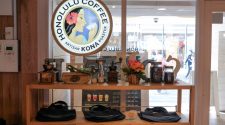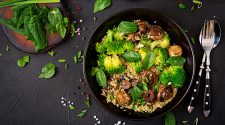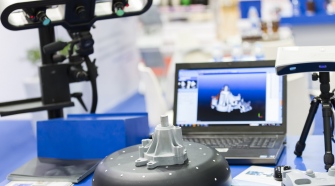Moisture is usually present in food, either in the form water or proteins and carbohydrates. However, the former form of moisture can affect the food products if they are present in an amount more than required. This helps in the growth of yeast and mold as well as bacteria, which, in turn, changes the quality of the food.
There are a few things that you need to know about moisture, so that you know better about how to manage it in food items.
- Moisture content is measured by calculating the total weight of water present in food.
- You need to calculate water activity in food to keep a check on growth of microorganisms.
- Understand the relationship between water content and water activity, so that you know that the food is still safe to consume.
- Different foodstuffs may have same water content, but do not have same water activity.
List of Water Activities of Some Food Products
The chances of growth of bacteria and mold increase in a food product when its water activity is above 0.95. Keeping this in mind, you can find out which of the foodstuffs fall under this category and take measures to protect their quality. Some common foodstuffs and their water activities are given below.
- Water activity of fresh meat, fish and raw vegetables is 0.99.
- Water activity of raw fruits is 0.98.
- Cooked meat and bread have water activity of 0.91-0.98.
- Moist cakes have 0.90-0.95 of water activity.
- Salami has 0.82 water activity.
- Water activity of beef jerky is less than 0.80.
- Water activity of biscuits is less than 0.60.
- Peanut butter has water activity of 0.70.
- Water activity of jams and marmalades is 0.75-0.80.
Factors like drying, high solute content, freezing and their combinations affect the water activity of food products. If you want to protect a food product from moisture, lower its water activity.
Tips to Control Moisture Content
In food industry, different types of methods are used for managing moisture in food products, some of those are:
- Select the required storage, time and temperature based on the type of food products that you need to store
- Clean and dry the moist and condensed surfaces as quickly as possible.
- Get rid of excessive water in chilled foods and drip lies by employing different mechanisms.
- Pour chilled water in meat and poultry through drip lines to soften them.
- Use time-temperature equipment that will reduce moisture content and bacteria growth.
Use Temporary Moisture Control Methods
If you use effective humidity control measures, you will get the following benefits.
- Time taken to clean and dry will be reduced to a great extent.
- Health of the workers as well as food will be improved.
- All kinds of equipment including walls and machinery will be dried.
- You can meet all the food specifications more efficiently.
- Less frost occurs in freezers so there will be smaller defrost cycles.
Keeping all these things in mind, make sure that you don’t let the season affect your food manufacturing. Use measures to keep climate and humidity in check, so that you can produce quality food products and provide first-class facilities as well as eating experience to your customers.
















